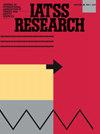E-scooter riders: A cross-cultural analysis of traffic safety attitudes and behaviors
IF 3.3
Q3 TRANSPORTATION
引用次数: 0
Abstract
The rapid adoption of electric scooters (e-scooters) has transformed urban mobility, offering a practical and flexible alternative to traditional transportation modes, particularly in areas with limited access to public transit. However, this rise in popularity has also brought about serious road safety concerns, particularly regarding risky behaviors such as riding under the influence of alcohol, carrying multiple passengers, and non-compliance with traffic regulations. While non-compliance with traffic regulations is not unique to e-scooter users, the combination of multiple risky behaviors observed among them may contribute to a higher likelihood of such violations. In addition, protective behaviors, such as helmet use, remain low among many riders, increasing injury risk in the event of a crash. This study aimed to analyze the prevalence of self-reported risky behaviors across various demographic groups and regions, and to assess factors contributing to the likelihood of unsafe e-scooter riding behavior. To achieve this, we used data from the third edition of the E-Survey of Road users' Attitudes (ESRA), focusing on responses from 39 countries worldwide. Descriptive analyses of self-reported data were conducted to examine e-scooter usage patterns and self-declared risky behaviors. Additionally, mixed-effects logistic regression models were employed to identify significant predictors of these behaviors, including gender, age, student status, crash history, and attitudes toward traffic laws. The results revealed that younger individuals and males are more likely to use e-scooters and engage in risky behaviors. Key factors influencing or associated with these behaviors included previous crash involvement, student status, and permissive attitudes toward safety regulations. The study highlights the need for targeted safety interventions that address infrastructural factors as well as behavioral factors, including demographic and attitudinal influences. This integrated approach can help policymakers develop more effective strategies to mitigate the risks associated with e-scooter use and enhance urban road safety.
电动踏板车使用者:交通安全态度与行为的跨文化分析
电动滑板车(e-scooters)的迅速普及改变了城市交通,为传统交通方式提供了一种实用而灵活的替代方案,特别是在公共交通有限的地区。然而,这种受欢迎程度的上升也带来了严重的道路安全问题,特别是关于危险行为,如酒后骑行、携带多名乘客和不遵守交通规则。虽然不遵守交通法规并不是电动滑板车使用者所独有的,但在他们中间观察到的多种危险行为的结合可能会导致这种违规行为的可能性更高。此外,许多车手使用头盔等保护行为的比例仍然很低,这增加了发生碰撞时受伤的风险。本研究旨在分析不同人口群体和地区自我报告的危险行为的流行程度,并评估导致不安全电动滑板车骑行行为可能性的因素。为了实现这一目标,我们使用了第三版道路使用者态度电子调查(ESRA)的数据,重点关注了全球39个国家的反馈。对自我报告的数据进行描述性分析,以检查电动滑板车的使用模式和自我声明的危险行为。此外,采用混合效应逻辑回归模型来确定这些行为的重要预测因素,包括性别、年龄、学生身份、碰撞历史和对交通法规的态度。结果显示,年轻人和男性更有可能使用电动滑板车并从事危险行为。影响或相关这些行为的关键因素包括以前的碰撞参与,学生身份和对安全法规的宽容态度。该研究强调需要有针对性的安全干预措施,既要解决基础设施因素,也要解决行为因素,包括人口和态度的影响。这种综合方法可以帮助政策制定者制定更有效的战略,以减轻与电动滑板车使用相关的风险,并加强城市道路安全。
本文章由计算机程序翻译,如有差异,请以英文原文为准。
求助全文
约1分钟内获得全文
求助全文
来源期刊

IATSS Research
TRANSPORTATION-
CiteScore
6.40
自引率
6.20%
发文量
44
审稿时长
42 weeks
期刊介绍:
First published in 1977 as an international journal sponsored by the International Association of Traffic and Safety Sciences, IATSS Research has contributed to the dissemination of interdisciplinary wisdom on ideal mobility, particularly in Asia. IATSS Research is an international refereed journal providing a platform for the exchange of scientific findings on transportation and safety across a wide range of academic fields, with particular emphasis on the links between scientific findings and practice in society and cultural contexts. IATSS Research welcomes submission of original research articles and reviews that satisfy the following conditions: 1.Relevant to transportation and safety, and the multiple impacts of transportation systems on security, human health, and the environment. 2.Contains important policy and practical implications based on scientific evidence in the applicable academic field. In addition to welcoming general submissions, IATSS Research occasionally plans and publishes special feature sections and special issues composed of invited articles addressing specific topics.
 求助内容:
求助内容: 应助结果提醒方式:
应助结果提醒方式:


